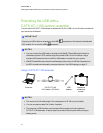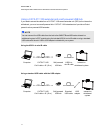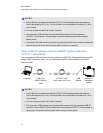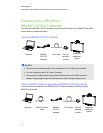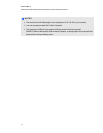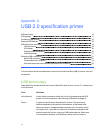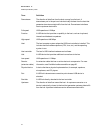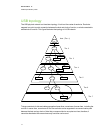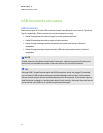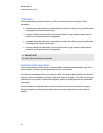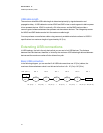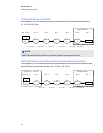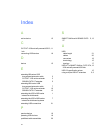Connecting USB devices
USB attachment points are provided by a special class of USB device known as a hub. The
additional attachment points provided by a hub are called ports.
A host includes an embedded hub called the root hub that can provide one or more attachment
points. Hosts may also have other non-root internal hubs to provide further expansion capability.
These internal non-root hubs are tier 2 devices, and limit the number of external hubs that you can use
in a path.
Powering USB devices
A USB host can supply power for USB devices that are directly connected. USB devices that rely on
power from the cable are called bus-powered devices.
USB devices that have their own externally connected power supplies are called self-powered
devices.
When a bus-powered device connects to the host’s USB interface,the host allocates power in
increments called unit loads. A unit load is defined to be 100 mA. A device may be either a low-power
device using one unit load or a high power device, consuming up to five unit loads. When connecting,
all devices default to low-power. If required by the device, the host’s software controls the transition
to high-power by ensuring that adequate power is available. Hosts that are externally powered must
be able to supply up to five unit loads ( 500 mA) of power but may supply significantly more. Battery
powered hosts may supply from one to five unit loads but may limit the power to conserve battery
power.
A P PE N D I X A
USB 2.0 specification primer
18



